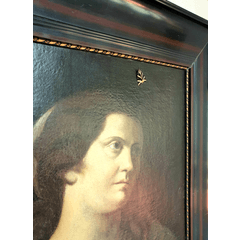Emotes drawing with Clip Studio Paint
Create document
Emotes are z. Uploaded to 28x28px, 56x56px and 112x112px on Twitch.
We put our document in 1500x1500px to expect this later with the highest possible quality.
We work with the following levels for the beginning: lineart, shadow, coloring and sketch.
Important here is the lineart is a vector level.
Make a sketch
Here I already have a finished sketch of a dog we will work with.
You can download the sketch here and join us.
If you want to do something of your own you can create a new document under [File] - [New].
Little details and use as much space as possible
Emotes in particular, it is important to use as few details and large areas.
If possible, any space on the surface should be used meaningfully. After all, the final product is only whole 28x28px.
Linear or inking
For the linear, we create a vector layer above our sketch. Gladly you can put the sketch on 20-40% deckgraft. To do this, we go to the governor over our levels. Currently this should be 100%. We can move it at will. This has the advantage that you can concentrate on the lineart but still keep an eye on the sketch.
For starters, you can set the stabilizer for straighter lines in the linear mode. I recommend a value of 30 for beginners, one of 10-15 for experienced ones.
Try to follow the blue lines with your swing. I like to draw beyond the goal. We'll get to that soon.
When you're done with your line art, we come to the eraser tool.
etching tools
The special thing about the Vector plane, with respect to the lineart is the eraser. If this is set as shown in the picture, you can easily erase too long or superfluous lines with this easily.
primary colors
For the basic colors we work on the coloring level.
The basic color for our dog emote is a light brown and white.
For the eyes we can take a bright blue.
Of course you do not have to stick to the original motive. A dog in blue or pink also have your charm and would even be visually special.
With the filling tool you can easily fill your emote with color. All you have to do is to accept the settings as shown in the picture above. As a result, Clip Studio automatically closes gaps and fills in your surfaces without white contours.
Use canvas for preview
A great trick to watch in advance how the emote will look like in the end, the screen offers function. This new window you just pull out of the bar.
With this tool we create an image of our document. The created canvas we pull out of the bar, pull the window small and set the zoom to 2-3%.
So we have a realistic size for our emote. And the best? It works like a mirror, we change something in our document, you see it in the canvas immediately.
Light and shadow
Light and shadow is probably the most important thing in the entire emote. Here I have marked you the shadows as I would do these. Try something out if you like it differently. If you look at his sketched shadows in small, you can see if they are consistent.
For the shadows, we work on the shadow level.
Gradient tool
To set our shadows we use the Lasso tool and gradient tool.
With the gradient tool, we take the topmost setting, which makes our course transparent.
With the Lasso tool we now draw our surfaces where the shadow should be visible. As a result, we have made a selection where the gradient or the shadow can be seen.
Now we change to the gradient tool. Now we can hold the color of the area while holding down the [Alt] key.
In the color triangle, we go now with the color something in the darker. Then we pull our course from the shadow side towards the light source. We repeat this for all surfaces. It's best to first make all the shadows of a color. There are no color differences in the gradients.
Of course we do the same with the light in our emote. What we can do in addition is highlights. Say, we take a light shade,
z. B. white and set reflections. For these you can create a new layer with highlights.
Of course, we are adjusting the highlights. So we can optically adjust the reflection in the right eye.
In the end, your emote should look something like this:
Colorize contours
What gives a particularly soft look is: coloring contours.
To do this we take a new layer and drag it over our vector layer.
This layer is a layer mask. Through the symbol seen in the picture, our level on the left gets a pink stripe. The symbolizes that we only see something where there is something in the plane below.
You can imagine it as a template. At our level, we can now paint the contours with our brush at will. Normal is recommended to take a darker tone than can be seen in the area. But just try something around. Even lighter contours can give a nice look.
Export
For export we do the background layer (paper).
Then we go to File - Export - PNG.
We export our emotes as PNG so we can hide the background. The normal sizes for emotes you see in the picture above. After we have created our drawing in 1500x1500px, we can export this for all platforms worry-free.
Here are the export sizes for z. Eg Twitch. When exporting, you can of course enter the appropriate pixel sizes for you.
























Comment